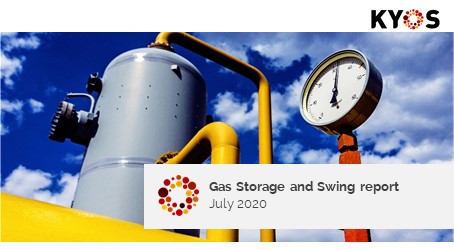Gas Storage and Swing Report – quarterly update
Make the most of your gas storage!
 Every quarter we publish an update of our Natural Gas Storage and Swing Report. It presents price assessments of a few standard storage and swing contracts, which you can benchmark to your own valuations. Above all, the report provides transparency to an otherwise opaque trading market, also revealing the underlying assumptions about market prices, market volatilities and trading strategies. Take advantage of our free service to you!
Every quarter we publish an update of our Natural Gas Storage and Swing Report. It presents price assessments of a few standard storage and swing contracts, which you can benchmark to your own valuations. Above all, the report provides transparency to an otherwise opaque trading market, also revealing the underlying assumptions about market prices, market volatilities and trading strategies. Take advantage of our free service to you!
With our Natural Gas Storage and Swing report, we report about a few selected contracts. But of course we realize that you may have different needs! Our report compares the current quarter to the previous, but would you need data per month? Or do you need historical valuations? Or over a longer horizon? No problem, just contact us for more information.
We have in the past made customized reports for very different types of companies. For example, we provided data that was used in several arbitration cases between energy companies. Also companies used our analysis to facilitate their investment or divestment decisions.
Gas Storage and Swing Report – Market Comments July 2020
The COVID-19 crisis had a strong impact on gas prices during Q2-2020. Lower industrial activity across Europe drove down gas and power demand and as a result gas spot prices. TTF spot prices bottomed at the end of May at an historical low level of just over 3 €/MWh. During June, spot prices recovered and stabilized at around 5 €/MWh. The low absolute price levels combined with the observed spot price changes led to an increase of the spot price volatility over Q2-2020. We increased our view on the TTF spot price volatility to 67%, 3 percent points up compared to our assessment of the previous quarter.
The curve was more immune for the COVID-19 crisis, reflecting the markets view that the effects of the crisis are not long lasting. Furthermore, oil prices also gave support to longer-term gas prices. After a strong dip at the end of April, leading to the first ever negative prices for the NYMEX front-month contract, oil prices recovered sharply. At the end of Q2-2020 the TTF Cal-20 contacts closed therefore even 0.5 €/MWh higher, at 12.50 €/MWh, than at the start of the quarter.
The storage spread (Q1-2022 x Q3-2021) only showed little movement. On the TTF the spread went slightly down and up on the NBP. The combination of increased spot volatility and a wider storage spread led to an increase in the assessed market value of our NBP storages. The full option value of the 30-day storage product for example went up with 0.73 p/th to 21.90 p/th. On the TTF the effect of the increase in spot volatility was cancelled by the decrease in the storage spread. The market value of TTF storages was marginally negative as a result.
Higher spot volatility and an overall higher price level during Cal-21 are the main drives for the increase seen across the assessments of the most of our swing contracts. However, value changes compared to our assessment of the previous quarter are small.
To read the complete report with graphs and tables, please click here: KYOS Gas Storage and Swing report Nr 27 Jul 2020
Methodology
All valuations have been performed with KYOS software and models, KyStore and KySwing. KyStore and KySwing support traders, portfolio and risk managers in natural gas markets. Inputs include market parameters, together with our own suggestions, forward curves and other parameters and settings. The model calculates the intrinsic value based on the forward curve and takes tradable products and bid/ask spreads into account. Our software uses Monte Carlo simulations of spot and forward prices to provide the rolling intrinsic and option values. Numerous companies in the energy industry already use our valuation software. You can find more information about our gas optimization software on our solutions page here.
More information
Would you like more information about the models and assumptions underlying this report, or request a demonstration of the KYOS software? Contact us for more information via the contact form in the black section below, or send us and e-mail: info@kyos.jp.
